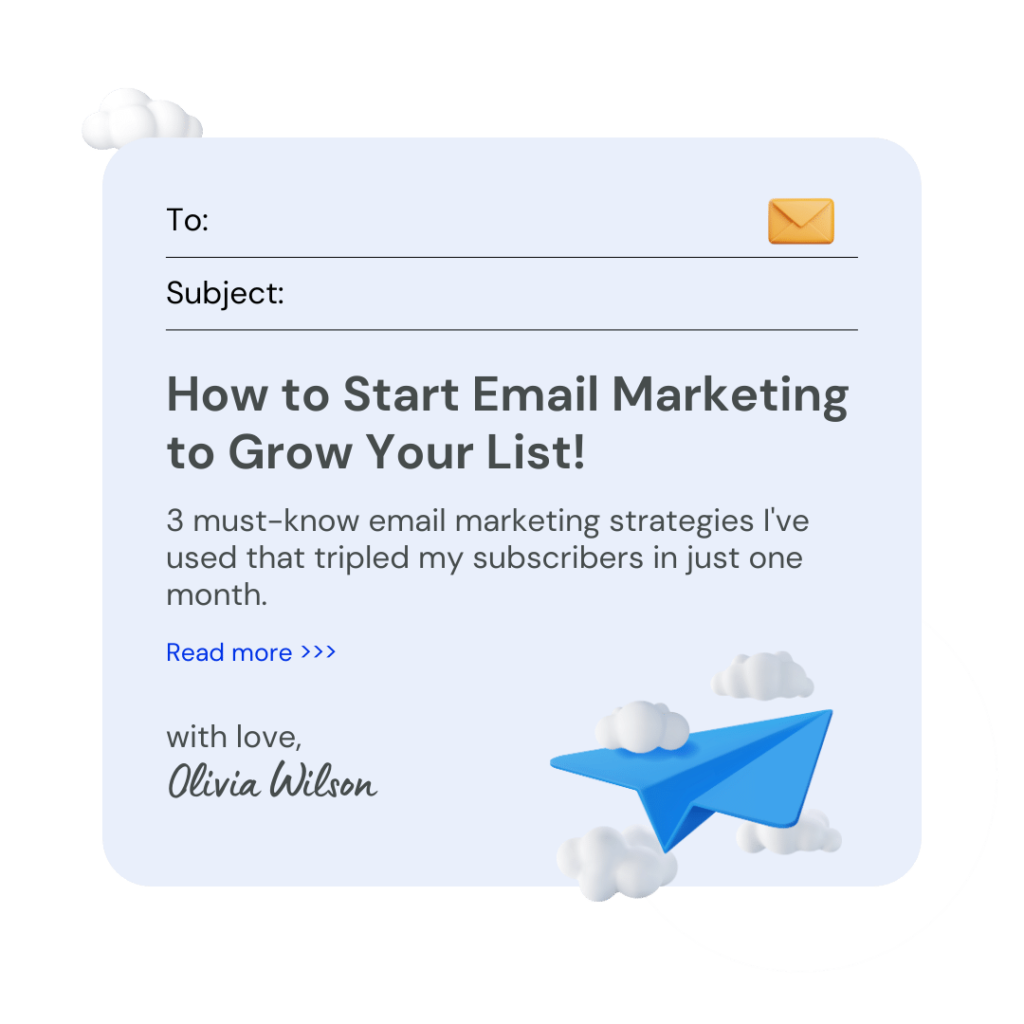If you’re wondering how to start a dropshipping business with no money, read on for the essential steps to take your business from concept to profit. You can avoid the financial burden of stocking inventory or renting a physical storefront.
1. What is Dropshipping?
Dropshipping is a way to sell things online without keeping them in a store. When someone buys from you, you order that item from another company. They send it to the customer for you. You don’t have to worry about stocking items or shipping you just focus on selling.
2. Why Dropshipping is a Good Business Model?
Dropshipping is a cost-effective and low-risk business model ideal for entrepreneurs. It requires minimal start-up investment because you don’t need to buy inventory. You can operate from anywhere and focus on marketing, as suppliers handle shipping and inventory for you.
3. Setting Up Dropshipping with No Money
Free Platforms to Launch Your Dropshipping Business
1. Shopify
Offers a 14-day free trial. Although you will eventually have to pay, the free trial allows you to set up and test your store. The platform has built-in drop shipping features.
2. WooCommerce
A free WordPress plugin that converts your WordPress website into an online store. The plugin itself is free, but you’ll need a WordPress site, which can be cheap if you use a subdomain or a free hosting service.
3. Big Cartel
Has a free plan that allows up to 5 products. Good for testing the waters.
4. Magento
Free to use, but requires you to provide your hosting. Suitable for those with technical skills.
5. PrestaShop
Like Magento, it’s free but requires self-hosting. It’s also more suitable for tech-savvy people.
How to create a Dropshipping business with no money
Market Research: Start by using free online tools and resources to conduct market research. You can use platforms like Google Trends to identify potential niches that interest you. You might also consider forums and social media platforms to understand the demand and trends within those niches.
Competition Analysis: Your next step should be to analyze your competitors. You can do this manually by checking out their websites, social media channels, and customer reviews. Take note of the gaps in the market that they aren’t filling, and think about how you could leverage those opportunities.
Target Audience: After identifying a niche and understanding the competition, you need to define your target audience. Use free online personas templates to develop a detailed understanding of who your ideal customers are, their needs, and where they hang out online.
4. Finding Your Niche: The First Step to Success
Finding the right niche is key to business success. It lets you focus on a specific group of customers, making it easier to meet their needs and beat the competition.
Criteria for Selecting a Profitable Niche

Passion and Knowledge: Choose a niche you’re passionate about and knowledgeable in. It’s easier to work on something you love.
Market Demand: Ensure there’s a sizable demand for your product or service. No demand means no business.
Competition: While some competition is good (it validates market demand), too much competition could mean the market is oversaturated.
Profitability: Will you be able to charge a premium for your product or service? Is there potential for high margins?
Trends and Future Growth: Is the niche growing? Or is it a fad that will soon die out?
Accessibility: Can you easily reach your target audience? Think about distribution channels and marketing opportunities.
Market Research Techniques
Related: How to Buy a Business with No Money
Related: How to start an online business with no money
5. Market research
Market research is the backbone of understanding both demand and competition.
Here are some techniques:
Surveys: Ask potential customers about their needs, wants, and preferences.
Focus Groups: Engage with small groups to discuss specific topics in depth.
Competitor Analysis: Study what your competitors are doing, their strengths, and their weaknesses.
Observational Research: Observe consumer behavior directly, either in person or through digital means.
Online Forums and Social Media: Monitor discussions, reviews, and feedback related to your niche.
Tools and Methods to Understand Demand and Competition
Various tools and methods can help you get a clearer picture of the market demand and competition in your niche
Google Trends: A simple yet effective tool for identifying trending topics and consumer interests.
Keyword Research Tools: Tools like SEMrush or Ahrefs can give you an idea of how many people are searching for terms related to your niche.
Competitor Websites: Conduct a thorough review of competitor websites, studying everything from their product offerings to customer reviews.
Industry Reports: Often released by market research firms, these reports can provide a wealth of data and insights.
Consumer Reviews: Websites like Amazon and Yelp can provide customer opinions that give you a sense of what is lacking in current offerings.
Social Media Analytics: Tools like Hootsuite or Sprout Social can give you metrics on social media engagement related to your niche.
6. Setting Up a Basic, Yet Effective Website
When you don’t have much money, make a simple but good website. Make it clean and easy to look at so people can focus on your products. Make sure it’s easy to use on phones and loads fast. Put clear buttons like “Buy Now” so people know what to do.
Tips on Website Design That Converts
A good website helps sell more stuff. Use colors that make people feel good to help them decide to buy. Clear pictures are key; bad pictures push people away. Show reviews to build trust. Limited-time deals can make people buy quickly. Make checkout easy to stop people from leaving without buying.
7. Domain Names: Do You Need One?
Having your website name looks good and helps your store. But when you’re new, using a free name is okay. It saves money while you see if your store works. Later, you can buy your name to help your brand grow.
Using Subdomains and Why It’s Okay When Starting
Using a subdomain for your new dropshipping business is okay and can be good. It’s often free or cheap, so it’s good for saving money. It’s also a safe way to try out your new business idea. Later, when you make money, you can easily switch to your domain name. While having your domain is better for showing up in Google, a subdomain can still get you a lot of visitors if set up right.
Remember, By taking these factors into account, it’s possible to build a successful dropshipping business even with limited initial capital.
8. How to Find Reliable Dropshipping Suppliers
Finding a reliable dropshipping supplier is an essential step to ensure the success of your business. A good starting point is to perform online research, using directories that list various dropshipping suppliers, such as SaleHoo, Oberlo, or Worldwide Brands.
You can also meet suppliers at trade shows to check their stuff and how they work. Use social media and forums to find out what others say. Before saying yes, order some items to test quality and how fast they ship. Make sure they follow all laws. Talk about shipping, payment, and returns before you start. Ask for references from other businesses for extra comfort.
Signs of a Trustworthy Supplier
When picking a supplier for your dropshipping business, look for these things:
Trust: They should be open about how they do business and their prices.
Quality: They should promise that their products are good.
Quick to Answer: They should reply fast if you have questions or problems.
Good Reviews: Check if other people say they are good.
Experience: The longer they have been in business, the better.
Safe Payments: They should offer ways to pay that are safe.
Fast Shipping: They should send items in a reasonable time.
9. Inventory Management for Zero Cost
You don’t need to spend a lot of money to manage your stock well. Use Just-in-Time to only buy what you need, when you need it. This saves money and avoids too much or too little stock. With Dropshipping, you don’t need any stock; the supplier takes care of it and ships it straight to the customer. You can also use Lean ideas to waste less time and resources. Free software like ABC Inventory or Odoo can help keep track of your stock.
Tools and Techniques to Manage Your Products
To run your product line well, keep track of stock, sales, and orders. Small businesses can use Excel to do this cheaply. Bigger needs? Use software like Shopify. Use RFID tags or barcodes for fast, accurate counts. Set alerts for when stock is low or new stuff arrives. Use ABC Analysis to know what to focus on.
To make your dropshipping business work well, find good suppliers and manage your products well. This will help your business grow and succeed.
10. Marketing on a Shoestring Budget
When you’re starting a business or trying to grow one, the costs can quickly add up. Marketing can be expensive, but it doesn’t have to be. Below are some strategies for marketing effectively on a tight budget.
SEO Basics for Your Dropshipping Business
For your dropshipping business, focus on SEO by identifying relevant keywords and incorporating them into your site’s content and metadata. Create valuable blog posts and seek quality backlinks from reputable sites in your industry. This will improve your site’s ranking, bringing in more organic traffic.
Email Marketing: Why it’s Still Gold
Email marketing offers a direct line to your customers. Implement subscription forms on your website, personalize your emails, and segment your list based on customer behavior. This increases the likelihood of conversions.

Tips for Creating a Free but Effective Email List
To build an effective email list, offer a lead magnet like an ebook or exclusive discount to incentivize sign-ups. Use social media to promote your email list, emphasizing the value subscribers will receive. Remember, it’s better to have a smaller, more engaged list than a larger, disinterested one.
11. Sales and Customer Service
Both sales and customer service are integral to a successful business. While sales bring in revenue, excellent customer service ensures long-term customer loyalty. But how can a business offer top-notch services without breaking the bank? Here’s a guide for budget-friendly operations.
Payment Gateways: Taking Payments with Zero Fees
Several payment gateways offer budget-friendly options. Stripe has no setup fees and offers special rates for startups, while PayPal and Square offer no monthly fees but do charge per transaction.
Traditional methods like bank transfers and cash payments are fee-free but less convenient.
Cryptocurrency payments via platforms like CoinPayments can also offer low or zero fees. Mixing these options can further minimize costs.
Customer Service Excellence on a Budget
High-quality customer service doesn’t have to be expensive. The focus should be on solving customer issues effectively the first time to prevent repeat queries.
Free Tools and Best Practices for Superior Customer Service
Chatbots: Free versions handle basic queries.
Email Templates: Save time with pre-written responses.
Best Practices
Be honest.
Show empathy.
Prioritize customer needs.
Use feedback for improvement.
12. Scaling Your Business
Scaling your business refers to the process of growing it sustainably. A successfully scaled business will be able to handle an increase in sales, workload, and output in an efficient manner.
Zero-Cost Scaling Strategies
Grow your dropshipping business for free by using SEO for free website visits. Create content to get people interested and use social media to make fans. You can also team up with influencers or other businesses, talk to suppliers for better deals, and use affiliate programs. All these help you grow without spending much money.
Organic growth methods
Organic growth in dropshipping means growing your business without paying for ads. You use things like SEO to show up in Google searches, write blogs or make videos to interest people, and use social media to keep customers coming back. Reviews and emails also help get and keep customers. All these help bring people to your website over time.
Collaborations and partnerships
Working together with others can help your dropshipping business grow. You can join forces with social media stars to show off products, make good deals with the people who make your items, or team up with other businesses selling stuff that goes well with yours. You can also create special programs to help spread the word about your shop without spending a lot of money. Doing this can get you more customers and sales.
13. Legal Considerations
Ensure you have the appropriate business licenses and permits, which can vary by jurisdiction. Have clear contracts with suppliers and be mindful of consumer protection laws relevant to your target market. Also, double-check that your business name and products don’t infringe on existing trademarks or intellectual property.
Business Structure and Legal Requirements
Decide on a business structure (e.g., sole proprietor, LLC, corporation) that suits your needs and risk profile. Register your business and acquire any necessary permits or licenses. Open a separate bank account specifically for business-related transactions to simplify accounting and tax filing.
Summary
Want to start a business but low on money? Try dropshipping. You don’t need to buy things first; you sell, then buy from a supplier. Pick a popular topic you love. Use AliExpress to find stuff to sell. Shopify has free trials to make a store without coding. Use social media like Instagram and Facebook to get customers. Email is still good for keeping them. Start small, dream big. Your business starts with one click. Why wait? Be your boss now.
Frequently Asked Questions About How to Start a Dropshipping Business with No Money
Can I start a dropshipping business with zero money?
Technically, you can start a dropshipping business with very little capital, but “zero money” is misleading. You’ll need funds for a website, ads, and other operational costs.
What are the best free platforms for dropshipping?
Shopify offers a free trial but is paid long-term. Other options like WooCommerce, Magento, or OpenCart can be free to use but require paid hosting and add-ons.
How do I ensure the quality of products when dropshipping?
Quality assurance is vital. Always request samples, read reviews, and vet suppliers. Maintaining good communication with suppliers can help ensure that you’re selling quality products.
Are there any hidden costs I should know about?
Hidden costs can include transaction fees, shipping fees, or charges from suppliers. Budget also for returns and customer service needs, as these can add up over time.
How long does it take to see profits in a dropshipping business?
Profit timelines can vary widely. Some see profits within a few months, while others may take longer. Success depends on many factors like niche, marketing strategy, and execution.
Can I dropship internationally with zero capital?
Shipping internationally often involves additional costs and complexities like customs and tariffs. While not impossible, international dropshipping would be challenging with zero capital.
Is dropshipping still profitable in 2023?
Dropshipping can still be profitable in 2023, but competition is high. To succeed, focus on niche markets, quality products, and effective marketing. Adaptability is key.
Additional Resources
Recommended Reading List for Aspiring Dropshippers
“The $100 Startup” by Chris Guillebeau
“Made to Stick” by Chip Heath & Dan Heath
Free Online Courses on Dropshipping and eCommerce
Udemy: “Dropshipping Basics: Free Beginner’s Guide”
Coursera: “E-commerce Business Fundamentals”
Call to Action on How to Start a Dropshipping Business with No Money
1. Want to become a dropshipping pro? Sign up for our newsletter to receive expert guides, tips, and the latest industry insights directly in your inbox. Don’t miss out on the secrets to eCommerce success—subscribe now!
2. Found this dropshipping guide helpful? Share it with your network to help them succeed too! Click the share button to spread invaluable eCommerce knowledge. Together, let’s create thriving online businesses!
- Secret Websites to Make Money in 2025 - April 30, 2025
- Webull vs Robinhood: Which one is better in 2025? - February 14, 2024
- Bubble Cash Review For 2024: Is it Legit or a Scam? - December 30, 2023






1 thought on “How to Start a Dropshipping Business with no Money”